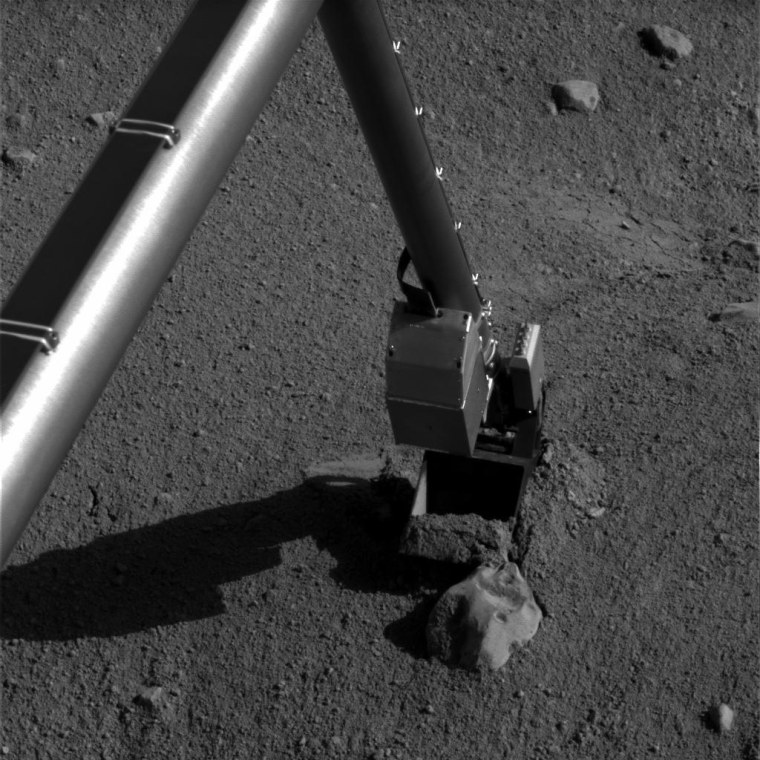NASA's Phoenix Mars Lander used its robotic arm to expose more of the hard icy layer just below the Martian surface so that it can more easily gather a sample of the material for analysis.
The trench, informally called "Snow White," was about 8 by 12 inches (20 by 30 centimeters) after digging by the arm Saturday. Mission controllers sent commands to the spacecraft Monday to further extend the length of the trench by about 6 inches (15 centimeters).
Scientists said tests in a lab on Earth suggested more area must be exposed in order to collect a proper sample.
"Right now, there is not enough real estate of dark icy soil in the trench to do a sample acquisition test and later a full-up acquisition" for the Thermal and Evolved-Gas Analyzer (TEGA), said Ray Arvidson, Phoenix's "dig czar," from Washington University in St. Louis. The TEGA instrument bakes samples of the Martian dirt in tiny ovens and analyzes the vapors given off to determine the composition of the regolith.
The plan to gather a sample of the rock-hard ice involves using the robotic arm's rasp to kick the icy soil into the scoop through a special capture mechanism. Scientists also want to scoop up any loose material left in the trench after the rasping activity, Arvidson said.
The rasp has already been used to scrap the exposed icy layer, though those samples were not analyzed. Samples of the shallower, non-icy soil from the Snow White trench though have been examined by Phoenix's wet chemistry laboratory and optical microscope. Last week, the lander stuck its fork-like probe into nearby dirt to see how well it conducts electricity and heat.
"The Phoenix science team is working diligently to analyze the results of the tests from these various instruments," said Phoenix principal investigator Peter Smith of The University of Arizona. "The preliminary signatures we are seeing are intriguing. Before we release results, we want to verify that our interpretations are correct by conducting laboratory tests."
As the robotic arm was extracting the fork probe from the soil on Saturday, it came into contact with a rock called Alice near the trench. The arm is programmed to stop moving when it encounters an obstacle.
Commands sent to the lander Monday told it to move its arm away from the rock, dump out soil that is in the scoop and extend the Snow White trench toward the lander.
